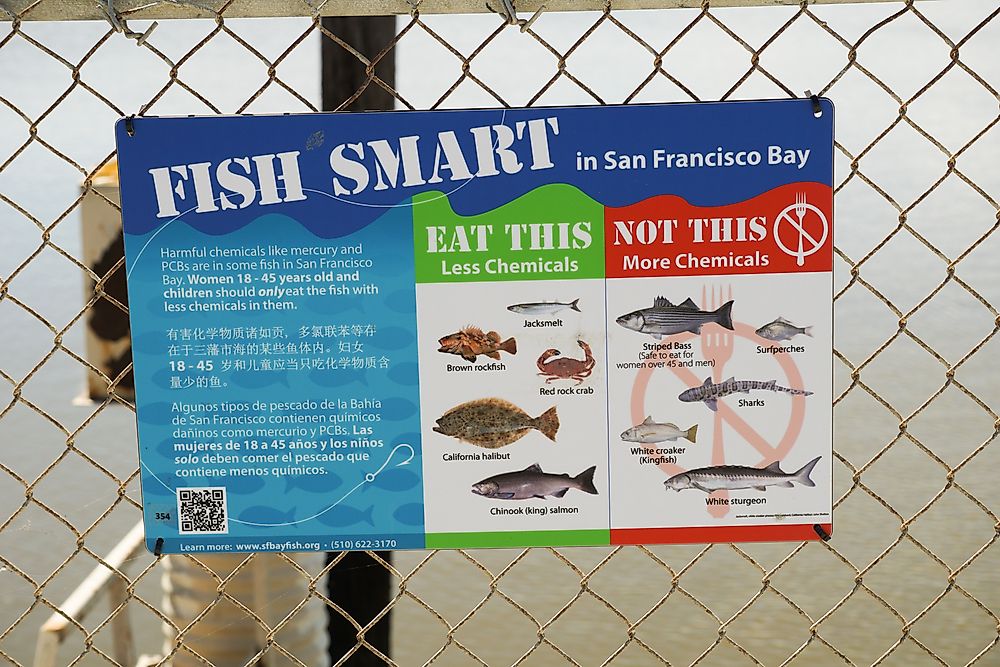What Is Bioconcentration?

Bioconcentration is a term used in aquatic toxicology and refers to the accumulation of a chemical when water is the exclusive source of the chemical in or on an organism. A bioconcentration factor (BCF) describes the level of chemical sharing between the environment and the organism. BCF is usually expressed in a unit of liters per kilograms, and it is a measure of milligrams of chemicals per kilogram of the organism to milligrams of chemical per liter of water. The factor is the organism’s chemical concentration to water concentration ratio. There are different ways to measure and assess bioconcentration and bioaccumulation. Some of the methods used include the octanol-water partition coefficient, Bioconcentration factor (BCF), Biota-sediment accumulation factor (BSAF), Bioaccumulation factor (BAF), and Fugacity based BCF among others.
Bioconcentration Applications
The bioconcentration factor (BCF) which is greater than one is an indication that lipophilic or hydrophobic chemicals are present. It is an indication of the probability of a substance to bioaccumulate. These Lipophilic substances have high affinity to lipids enabling them to accumulate in tissues that have a high amount of fats, as opposed to aqueous surroundings such as cytosol. In predicting chemical partitioning in the surrounding environment, scientific models are used which in turn permits the prediction of lipophilic chemicals’ biological fate. One such model is the Equilibrium Partitioning Model which assumes a scenario of a steady state, and the fate of a substance in a system would be modeled giving a prediction of concentrations and endpoints phases. Other scientific models are fugacity models and Food web models among others.
Bioconcentration: Applications to Toxicology
Bioconcentration factors enable the prediction of levels of contamination in organisms depending on the surrounding water’s chemical concentration. Bioconcentration factors do not explicitly take into consideration the metabolism, and therefore, they need to be considered in the models at other stages through elimination, uptake, or degradation equations for the organisms in question. Apart from prediction, another application of Biocentration factors includes body burden, which describes the total amount of a chemical in an organism’s body.
Biological Factors
Biological factors are crucial when determining the occurrence of bioconcentration, and there is competition against an organism’s rate of exposure through respiratory surfaces and the rate of excretion, which is a chemical loss. An organism’s surface to volume ratio can determine the rate of uptake of substances from the surrounding water. The primary factor affecting the values of bioconcentration factors is the species of concern as it establishes the biological factors that alter bioconcentration.
Environmental Parameters
Some environmental factors affect bioconcentration. The quality of water may affect bioavailability. Pollutants and natural particle content may bind to particles found in water hindering uptake, and ingestion contaminated particles by the organism. Temperature changes also affect bioenergetics and metabolic transformation. Change in pH, which is affected by temperature change, influences the bioavailability of ionic contaminants.
Effects of Bioconcentration and Bioaccumulation on the Aquatic Ecosystem
The long-term effects of bioaccumulation and bioconcentration are a reduction in wildlife population and damage to organisms. When heavy metals, such as mercury, cadmium, and lead, bind to cell walls there is a risk of disruption of cell surfaces, which affects metabolism leading to death in some cases. According to a 2001 study on Effects of Silver in Zooplankton, metal toxicity results in problems in the reproductive system. The study found that there was a decrease in the number of eggs as well as disruption in the development of ovaries. A 2015 study on Metal Bioavailability and Toxicity in Freshwaters showed that fish exposed to cadmium had coarse granules in their cytoplasm. Another observation was dilated blood vessels in most of the fish’s intestines.











